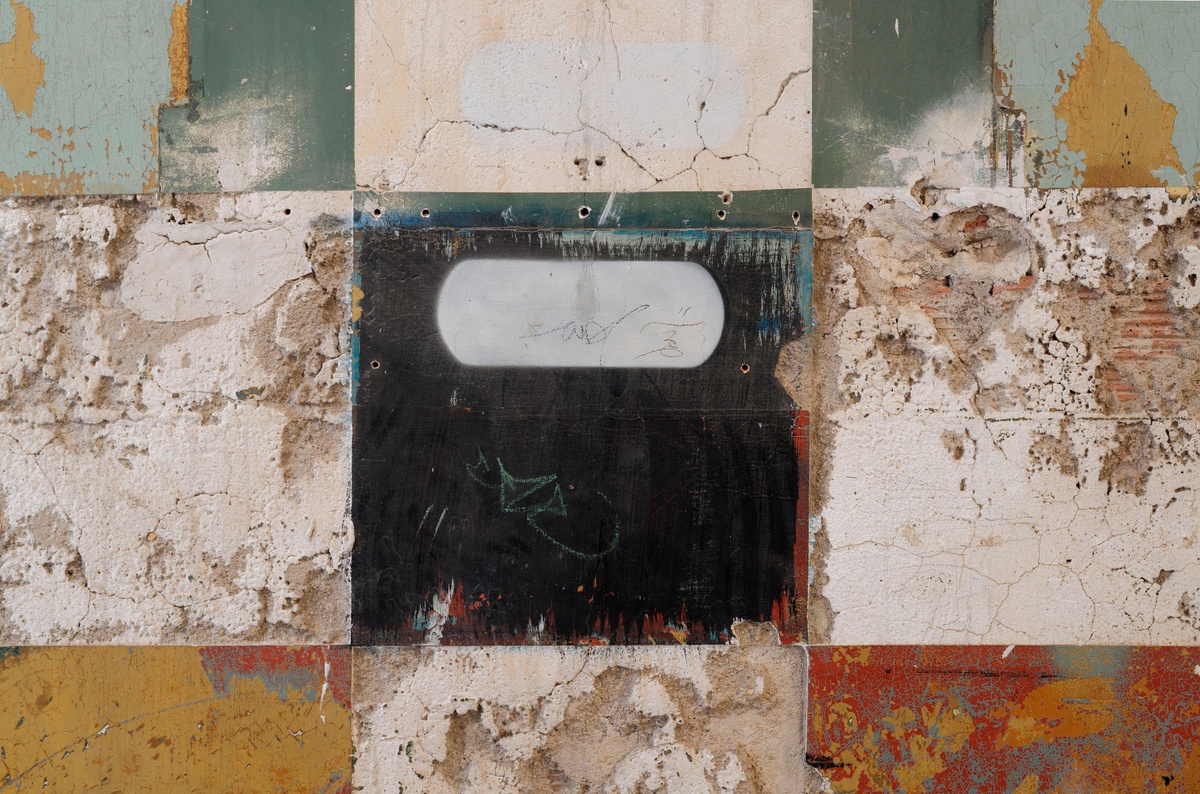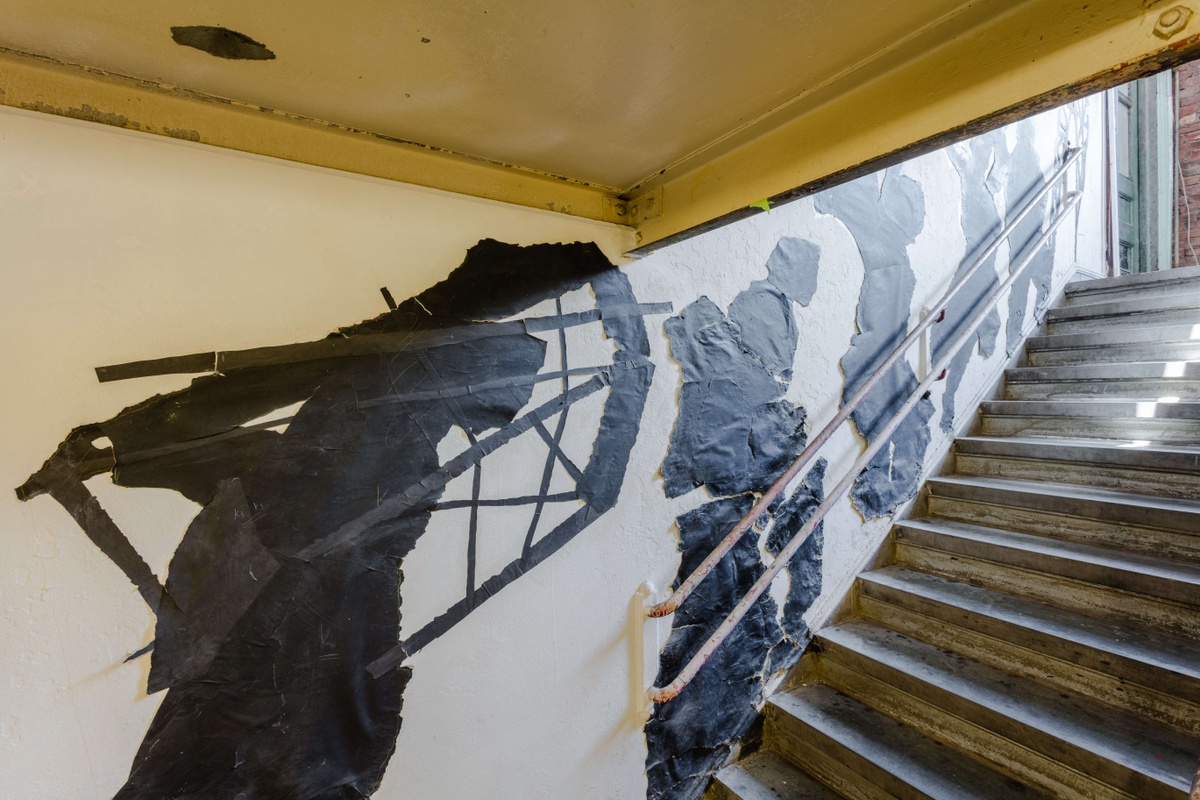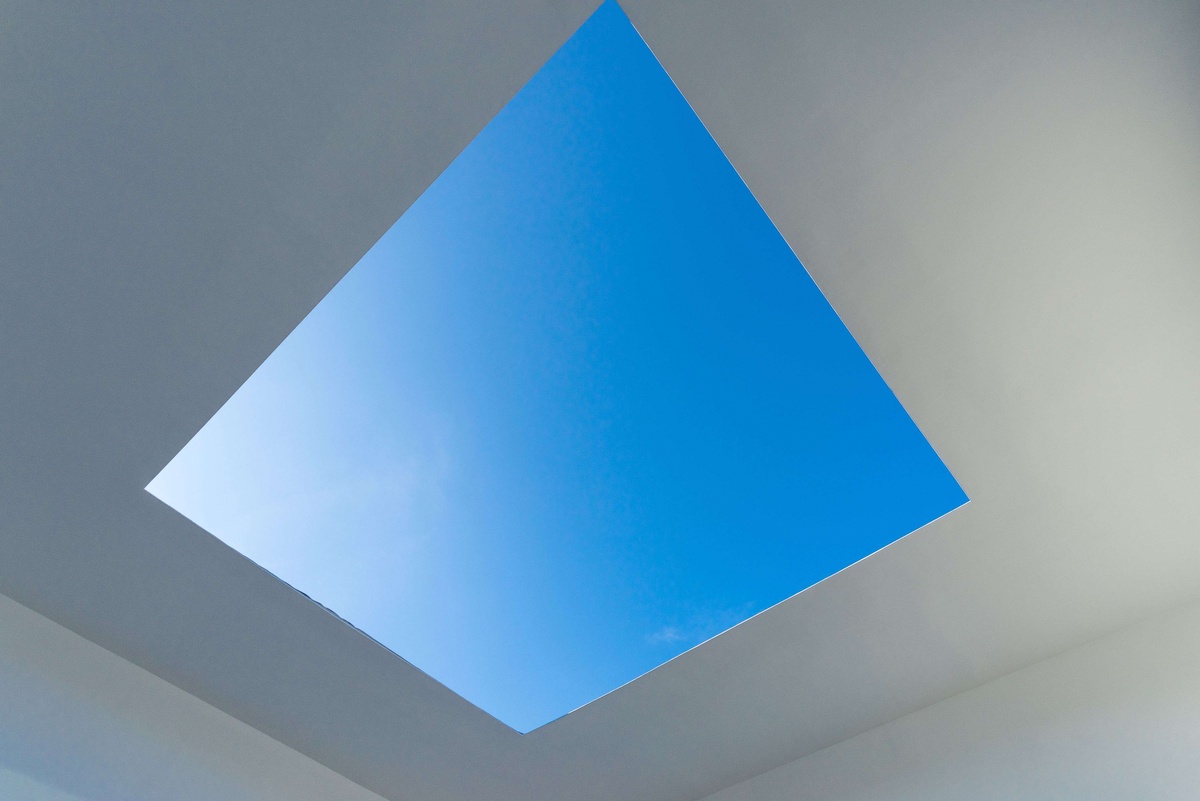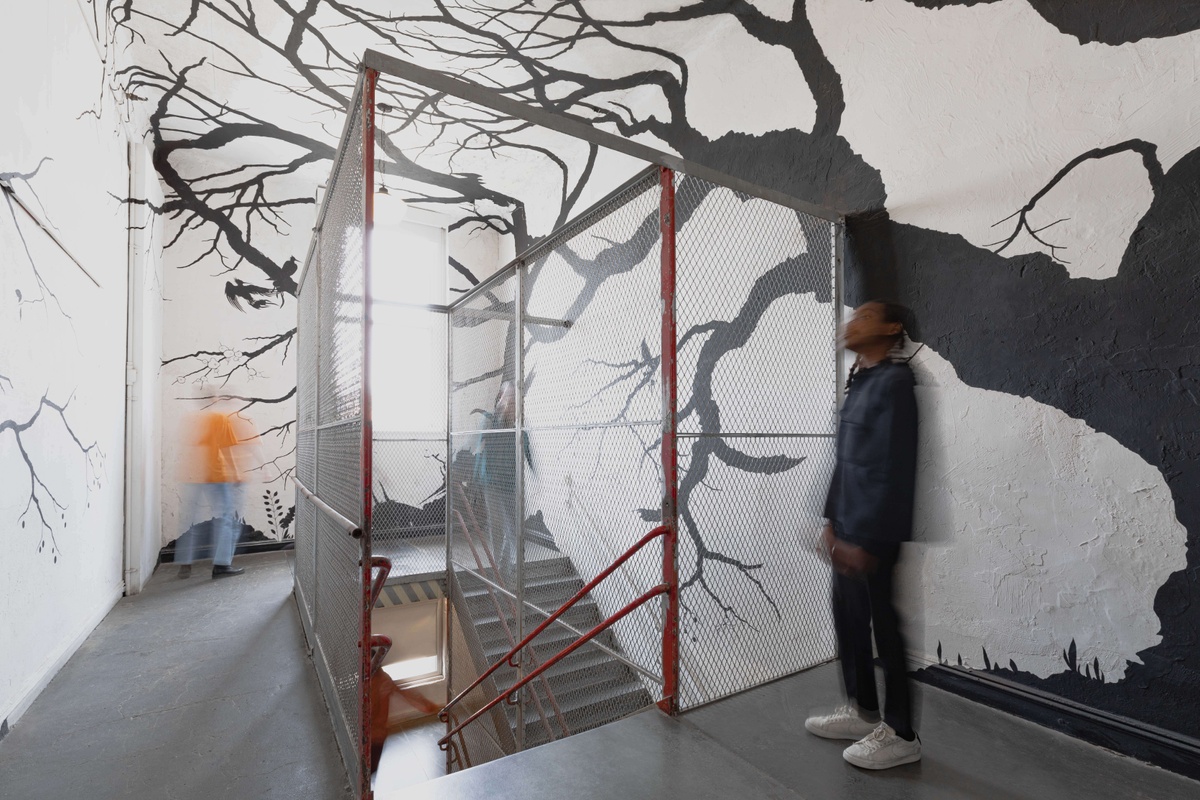Alanna Heiss: These are old war stories. If they’re only told to be funny that’s ok. If they’re told because the tellers enjoy them, that’s good too.
Narrator: That was the voice of Alanna Heiss, who founded PS1 in 1976. From the very beginning, artists activated the building with their work. One of the earliest was Richard Artschwager, who painted lozenge-shaped forms all over PS1. He called them called blps.
Keep an eye out as you walk around; they’re hidden in some unexpected places. You might, for example, encounter a black blp on a window near the 1st floor galleries.
In weaving the blps into the fabric of the building, Artschwager challenged viewers to look more carefully, even more creatively. That is, to begin to see the architecture of the building itself as a part of the exhibition. The blps bring into focus their context, which might easily go unnoticed.
Here’s Alanna Heiss on the origins of Artschwager’s elusive interventions.
AH: He called them blps. And I think he had a stencil for that. And he just said, “Well here’s what I’m going to do, but I’m going to do it all over the building. Do you have any particular places you want it?” And I said, “Well I don’t understand what it looks like.” Because it wasn’t very seductive, in a stencil form. It was just a blp. So the blp was not something I thought was very sexy. So I really didn’t care. He said, “You really don’t care where I put this, do you?” And I said, “No, I really don’t.” So he said, “Ok, I’ll put it wherever I want to.” And he put it directly on the walls, on the plaster. He put some on wood, some on plaster. He just put them all over the building.
I never dreamt he would put so many. I was still finding them the day I left PS1, to leave it forever. I saw another blp. Because they were quite secret. Either that or he had people replacing them all over. That could have happened too.
Narrator: As you walk through the building, see how many blps you can spot. There are at least 5 on the first floor and courtyard, that we’ve counted anyway.




